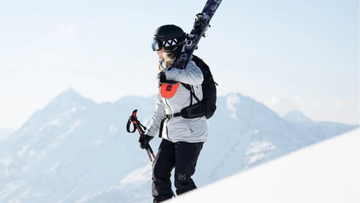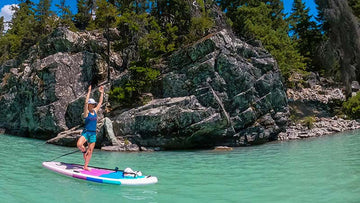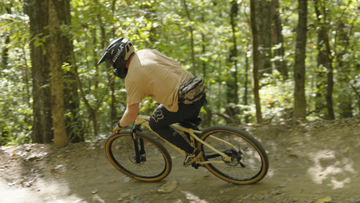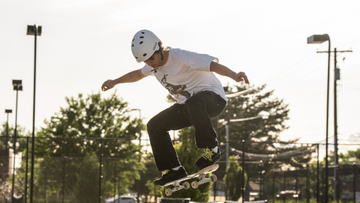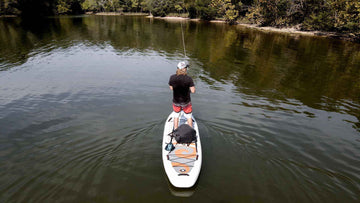 If you're new to paddleboarding, it's important to be aware of the most common mistakes beginners make.
If you're new to paddleboarding, it's important to be aware of the most common mistakes beginners make.
This will help you avoid any mishaps during your first outing and ensure that you have a positive experience. Keep them in mind the next time you hit the water, and you'll be able to have a safer and more enjoyable experience.
By the end of this article you should have a basic understanding about how to care for your SUP regardless of its composition and what to do in the case that it is damaged and in need of repairs. Do you need help RIGHT NOW? Don’t worry we have a FaceBook Group where there are several mentors available to answer your specific questions. So, let's jump in!
Table of content
1.NOT KNOWING HOW TO SWIM 2.PADDLING ALONE OR WITHOUT OTHERS KNOWING ABOUT YOU 3.NOT CHECKING THE WEATHER FORECAST 4.IGNORING LIFEGUARD OR INSTRUCTORS WARNINGS AND INSTRUCTIONS 5.NOT WARMING UP 6.NOT USING SUNSCREEN 7.DRINKING ALCOHOL 8.NOT WEARING A LIFE JACKET 9.FORGETTING TO USE THE LEASH 10.FORGETTING TO USE THE FINS 11.IGNORING YOUR PADDLE BOARD WEIGHT LIMIT 12.NOT RESPECTING YOUR BOARD’S RECOMMENDED AIR PRESSURE 13.NOT HYDRATING PROPERLY 14.NOT EATING ENOUGH 15.NOT BEING AWARE OF YOUR SURROUNDINGS 16.SUP PADDLING IN AN AREA THAT IS TOO SHALLOW 17.TRYING TO STAND UP TOO QUICKLY 18.NOT STANDING ON THE BOARD’S CENTER 19.HOLDING YOUR PADDLE BACKWARDS 20.PLANTING JUST THE PADDLE BLADE TIP 21.FOLLOWING WHERE THE WIND BLOWS 22.LOOKING DOWN WHILE PADDLING 23.FALLING ONTO THE BOARD 24.NOT TAKING THE TIME TO REST AND REFUEL FINAL THOUGHTS1. NOT KNOWING HOW TO SWIM
One of the most common paddleboarding mistakes is not learning how to swim first. Paddleboarding is a water sport, so it is important to know how to swim in case you fall off your board.
If you do not know how to swim, I recommend taking a swimming lesson or two before heading out on your paddleboard.
2. PADDLING ALONE OR WITHOUT OTHERS KNOWING ABOUT YOU

Whether you are experienced or just beginning, if you are paddleboarding alone, especially in open water, make sure to let someone know where you are going and when you will be back.
It is also a good idea to bring a cellphone with you in case of an emergency.
Paddleboarding with a friend or group is always safer than paddling alone.
3. NOT CHECKING THE WEATHER FORECAST

Checking the weather forecast is especially important if you are paddling in an open body of water, such as a lake or ocean.
If the forecast calls for strong winds or waves, finding another day to paddleboard is best. If you do decide to paddleboard in high winds, make sure to stay close to shore and be aware of your surroundings at all times.
An example of forecasting technology that you can use is Windy. It is a tool that, from your smartphone or computer, lets you know predictions like rain, temperature, humidity, powerful wind, etc. It has also webcams registering the last 24 hours' photos of some selected destinations.
4. IGNORING LIFEGUARD OR INSTRUCTORS WARNINGS AND INSTRUCTIONS
You should take into account the warnings and instructions of lifeguards and instructors. If you are ignoring them, you are just putting yourself in danger.
5. NOT WARMING UP

Warming up before any physical activity is important in order to prevent injuries.
Before heading out on your paddleboard, make sure to do some light stretching and exercises to warm up your muscles.
If you are paddling in cold weather, make sure to do some extra warming up in order to prevent muscle cramps.
I recommend you check these helpful warm-up exercises from SUPBoarderMag.com.
6. NOT USING SUNSCREEN
Applying sunscreen is one of the most important things you can do to protect yourself while paddleboarding.
Make sure to apply sunscreen 15-30 minutes before heading out and reapply it every two hours, or more often if you are sweating or swimming. You should also consider wearing a hat and sunglasses to protect your face from the sun.
Wearing long sleeves and pants made of UV-resistant fabric is another good way to protect your skin from the sun's harmful rays.
7. DRINKING ALCOHOL
Drinking alcohol is a bad idea for several reasons. First, alcohol can impair your judgment and make it more difficult to paddle safely. Second, alcohol can dehydrate you, which is dangerous, especially in warm weather. Finally, drinking alcohol while paddleboarding can be illegal in some areas.
8. NOT WEARING A LIFE JACKET
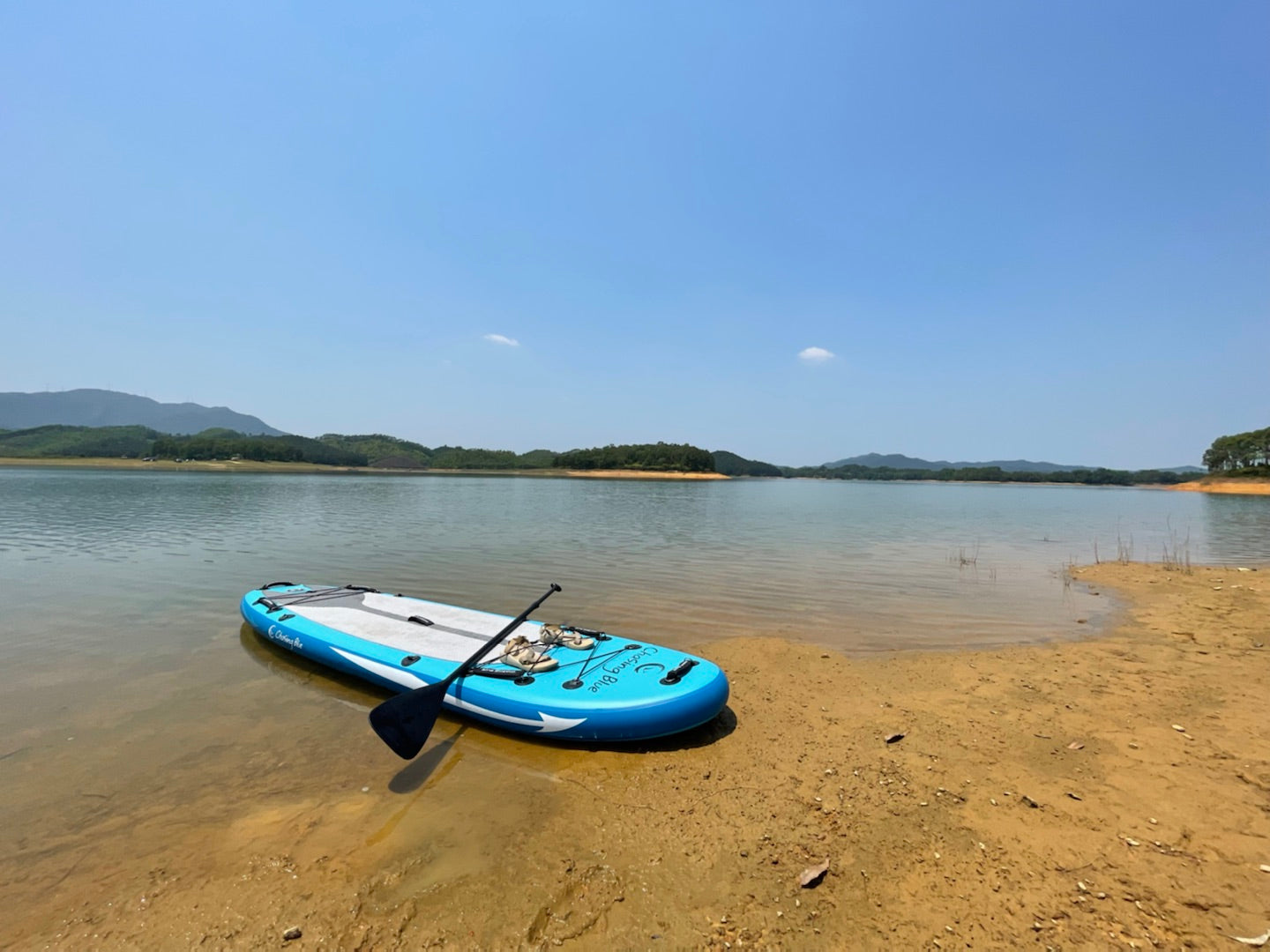
The U.S. Coast Guard reports that 76% of boating deaths in 2017 were due to drowning, and 84% of the victims were not wearing a life jacket.
Wearing a life jacket is always a good idea, even if you are an experienced swimmer.
In fact, wearing a life jacket is required by law in some states.
If you are paddling in open water, make sure to wear a bright-colored life jacket so that you can be easily seen by others.
9. FORGETTING TO USE THE LEASH
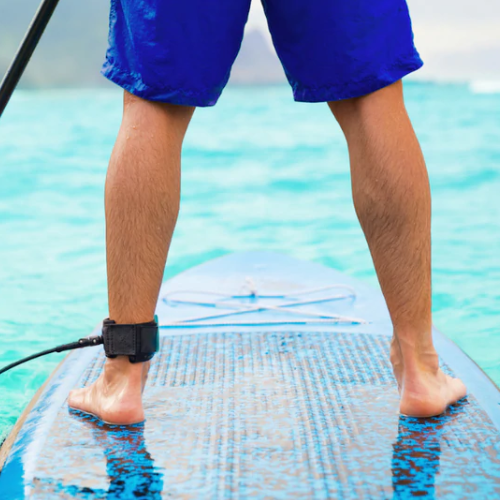
If you are paddling in open water, make sure to use a leash. A leash is a cord that attaches your paddleboard to your ankle or wrist.
The leash will keep you from losing your board if you fall off. Make sure the leash is the right length for you. It should be long enough to allow you some movement, but not so long that it gets tangled around your legs.
10. FORGETTING TO USE THE FINS

When you are paddleboarding, the fins on your board play a vital role in feeling stable and being able to keep a straight line on the water.
If you are not using the fins, you are more likely to tip over and fall into the water.
Even if you are an experienced swimmer, it is still important to use the fins because they help to keep you safe.
11. IGNORING YOUR PADDLE BOARD WEIGHT LIMIT
Paddleboards have weight limits for a reason.
If you exceed the weight limit, the paddleboard could lose its performance, become unstable and tip over.
This is especially important to remember if you are paddling with children or pets.
12. NOT RESPECTING YOUR BOARD’S RECOMMENDED AIR PRESSURE
It is important to follow your board's recommended air pressure. Over-inflating or under-inflating your board can affect its performance and stability. If you are not sure what the recommended air pressure is for your board, check the owner's manual or contact the manufacturer.
The Outdoor Master Shark II is an electric SUP pump that let you set your desired air pressure depending on your board recommendation. This way, you don’t have to worry about over-inflating your new inflatable padde board.
13. NOT HYDRATING PROPERLY
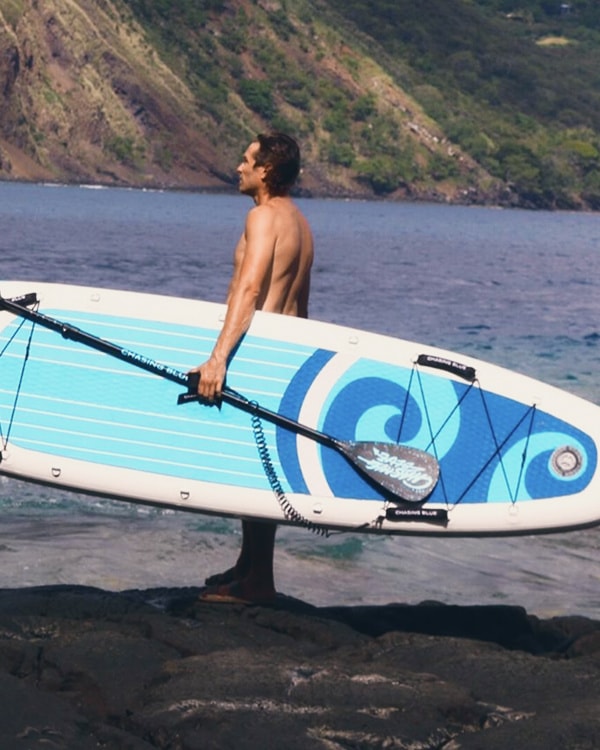
With a lack of hydration, swimmers can experience early onset fatigue during workouts, poorer response times, an increase in the risk of injuries, and sharp rise in the risk of cramping both inside and outside the pool.
Swimming World Magazine
Staying hydrated is essential when participating in any outdoor activity, but it is especially important when paddleboarding.
Make sure to drink plenty of water before, during, and after your paddleboarding session. You should also consider bringing a water bottle or hydration pack with you so that you can stay hydrated while on the water.
If you are paddling in warm weather, make sure to drink even more water to prevent dehydration.
14. NOT EATING ENOUGH
Just like staying hydrated, eating enough is also essential when participating in any outdoor activity. Make sure to eat a nutritious meal before heading out, and if you want, bring snacks with you for energy.
Paddleboarding can be strenuous, so it is important to make sure your body has the fuel it needs to keep going. If you are paddling in warm weather, make sure to eat even more to prevent exhaustion.
15. NOT BEING AWARE OF YOUR SURROUNDINGS

Keywords or tags used to describe some item. Multiple textual entries in a keywords list are typically delimited by commas, or by repeating the property.
16. SUP PADDLING IN AN AREA THAT IS TOO SHALLOW
This is a common mistake, especially for beginners. Paddleboarding in shallow water can be dangerous because if you fall, you can hit your head on the bottom.
I recommend paddleboarding in water that is at least waist-deep. This will help to prevent injuries if you fall off your board.
17. TRYING TO STAND UP TOO QUICKLY
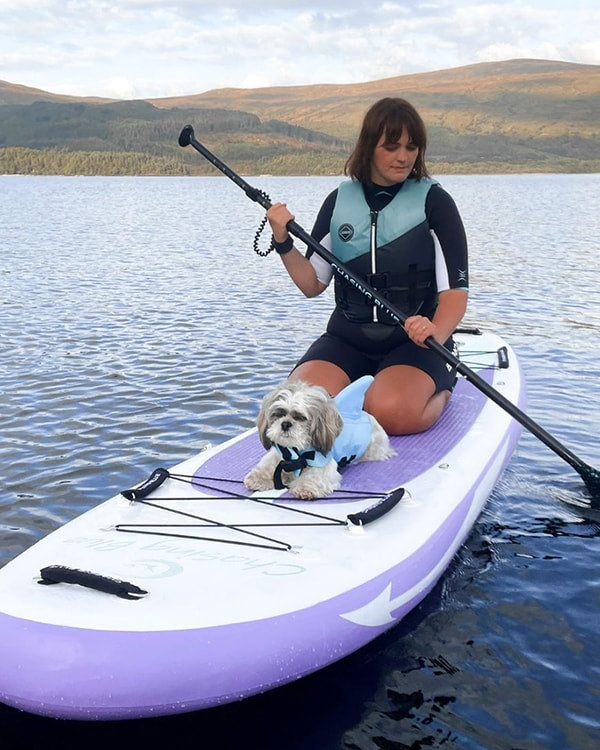
When you stand up too quickly, you can lose your balance and fall off your board. I recommend standing up slowly and carefully. Make sure to keep your feet shoulder-width apart and your knees bent. If you start to feel unsteady, sit back down on your knees until you regain your balance.
18. NOT STANDING ON THE BOARD’S CENTER
Standing in the center of your board will help you maintain balance and control. If you stand off to one side, you are more likely to lose your balance and fall off.
I recommend standing with your feet shoulder-width apart and your weight evenly distributed on both sides of the board. If you need to move around, do so slowly and carefully.
19. HOLDING YOUR PADDLE BACKWARDS
One of the most common paddleboarding mistakes is holding your paddle backward. This can make it difficult to paddle and can also put you at risk for an injury.
Holding your paddle the correct way will help you paddle more efficiently and will also reduce the risk of injuring yourself.
Outdoor Master SUP paddles (carbon fiber and stainless steel) have a logo on the facing forward side that makes holding them the correct way an easier task.
20. PLANTING JUST THE PADDLE BLADE TIP
When you are paddling, it is important to plant the entire blade of your paddle in the water. If you only plant the tip of the blade, you will not be able to generate as much power.
21. FOLLOWING WHERE THE WIND BLOWS
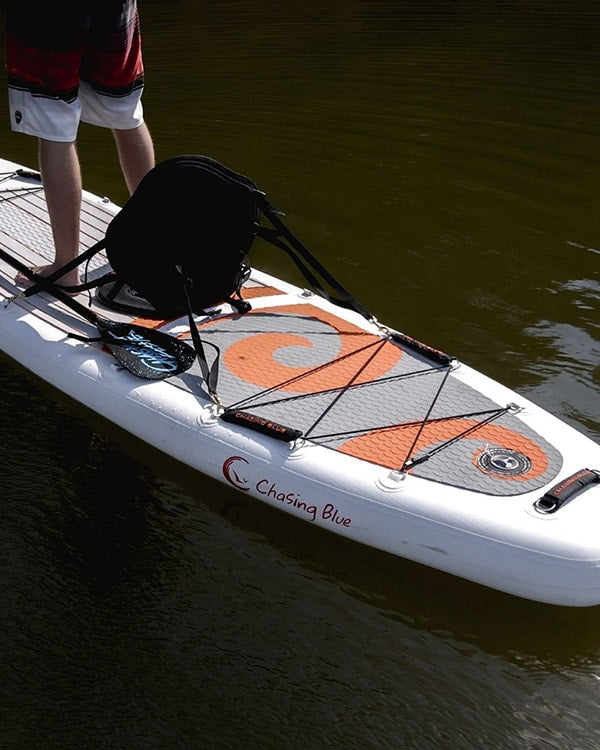
While it is important to be aware of the wind, you should not let it dictate where you paddle. Paddle into the wind first and then turn around and paddle with the wind at your back.
This will help you avoid getting blown off course or having to fight against the wind the entire time.
22. LOOKING DOWN WHILE PADDLING
Looking down while paddling can cause you to lose your balance and fall off your board.
I recommend keeping your head up and your eyes focused on the horizon. This will help you maintain balance and control. If you need to look down for any reason, do so slowly and carefully.
23. FALLING ONTO THE BOARD
Falling onto your board can be dangerous because you can hit your head or break something. I recommend falling off to the side of the board. This will help to prevent injuries.
24. NOT TAKING THE TIME TO REST AND REFUEL
After an hour or so of paddleboarding, it is important to take a break and refuel. Make sure to drink plenty of water and eat a snack to replenish your energy. If you are paddleboarding in warm weather, make sure to take even more breaks and drink even more water to prevent dehydration.
Paddleboarding is a great workout, but it is important to listen to your body and take breaks when needed.
FINAL THOUGHTS

I hope you found these tips helpful! Paddleboarding is a great activity that can be enjoyed by people of all ages and skill levels. Just remember to stay safe and have fun!
Don’t forget to join our SUP Facebook Group, where our friendly staff and SUP specialist can give you the much-needed support and help for you as a beginner!


